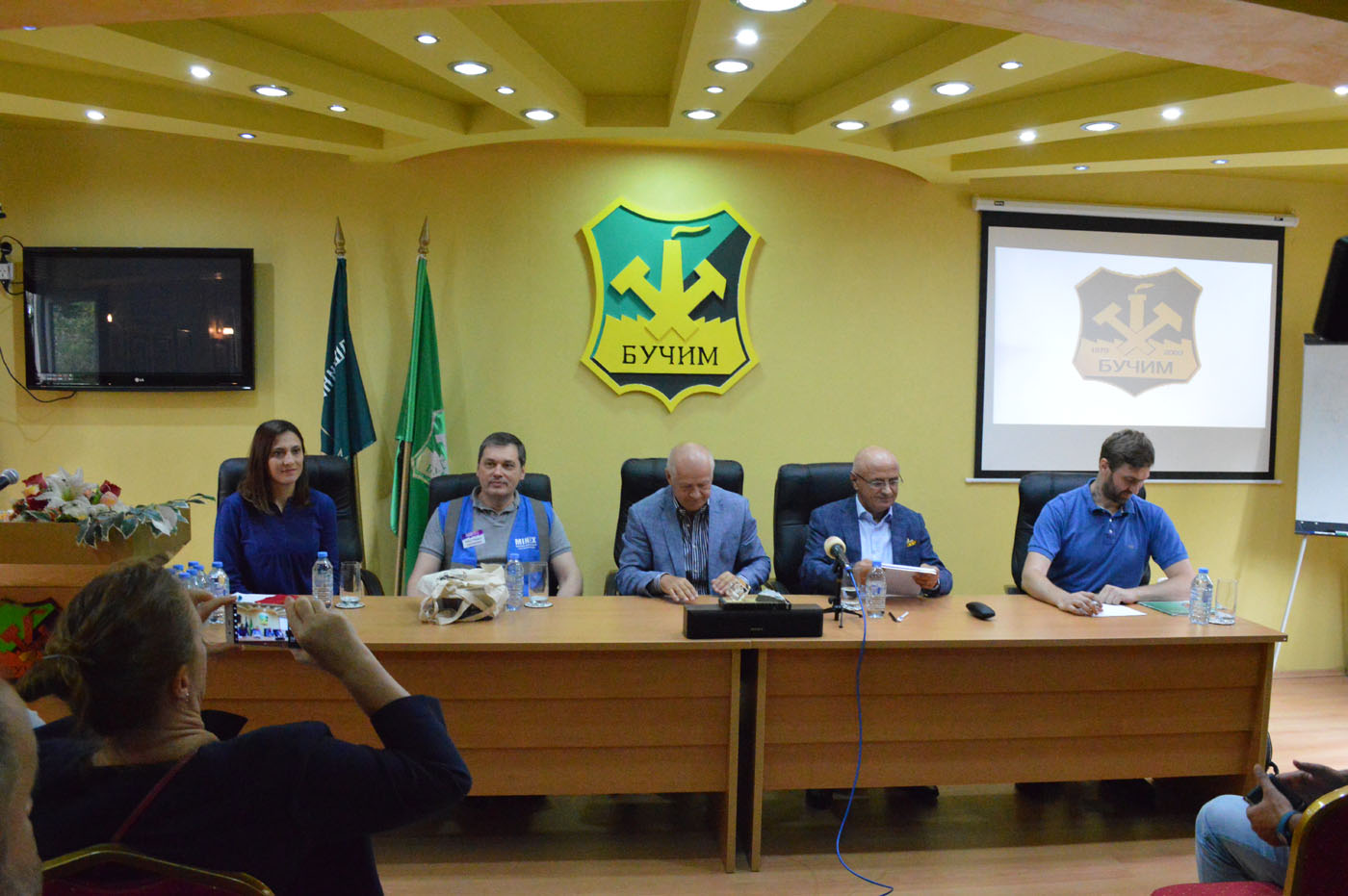On 14 June 2018, the MINEX Europe’18 Forum delegates visited Buchim Mine operated by Solway Group.
The Bucim mine, located in Radovish, North Macedonia, is a significant copper and gold mining operation. Bucim is an open pit mine which produces a concentrate containing copper and gold. It processes over 4.5 million tonnes of ore annually. Buchim operations in Macedonia have been granted complex, integrated environmental permits, as well as international certificates of environmental management systems ISO 14001 and production system management ISO 9001.
Date: 14 June 2018
Location: Radovish Municipality in southeastern North Macedonia
Highlights:
Mineralization: It is an actively mined porphyry copper-gold deposit associated with Tertiary subvolcanic intrusions.
History: Operational since 1978, it employs both open-pit and underground mining methods.
Ownership: Managed by Bucim DOO Radovish, a part of the Solway Group, it is the only operating copper and gold mine in North Macedonia.
Significance: Bucim mine plays a crucial role in the local economy and has been pivotal in the mining sector of North Macedonia for several decades.
History: The construction of the Buchim mine, located in Southeastern Macedonia, began in 1976 and the plant became operational in 1979 as a conventional open-pit copper and gold mine and flotation mill. The mine went bankrupt around the year 2000, due to depletion of the high-grade portion of the mine during the Yugoslavian era, combined with inefficient management, rendering the facility ill-equipped to deal with prolonged periods of low metal prices. Solway acquired Buchim in 2005, winning the Macedonian government’s international tender. Within a short period, Solway had repaired or replaced the mining fleet and implemented upgrades to the flotation circuit.
Production: Buchim is an open pit mine that produces clean flotation concentrate containing copper, gold, and silver. It processes over 4.5 million tons of ore per year. Over 40,000 tons of copper concentrate containing gold and silver are produced per year. In 2012, Solway built a small SXEW plant to process the oxidized portions of that mineralization and extract the copper from waste dumps that remained from previous decades of Buchim’s history. Today, the SXEW plant has a capacity of over 2,000 tons of 99.99% cathode copper per year. The new operation makes a significant contribution to the profitability of the mine. It also reduces the mine’s impact on the environment.
Buchim’s ore contains 0.2–0.3% of copper and 0.2–0.3 grams per ton (g/t) of gold. The copper concentrate does not contain any significant impurities and, due to its quality, is highly sought after by European smelters; the end product was transported to the copper smelters in Bulgaria.
Since 2005, the Solway Investment Group has invested over €32.6 million into the Buchim mine. This investment has supported the modernization and development of the mine, including the instalment of automated processing operations, flotation circle upgrades, the construction of a new tailings dump and reagents workshop, the recultivation of an old tailing dump, and the introduction of a closed water consumption cycle. In 2011, the Group invested €12 million and launched a new SXEW (copper leaching) plant and started producing cathode copper. When in full capacity, the new SXEW facility is able to produce up to 2,000 metric tons of copper per year (t/yr). The €12 million investment into the copper leaching plant construction not only increased Buchim’s economic efficiency but also decreased the plant’s impact on the environment.
With 600 employees, the mine is the biggest local employer in the region and is fully committed to its social and environmental responsibilities.
Since 2005, Solway has invested over US $2.5 million in the development of civic infrastructure and environmental protection in the towns neighbouring the Macedonian mine of Buchim. This includes, but is not limited to the maintenance of local athletic, cultural, and educational facilities; the purchase of medical equipment for local hospitals; the construction of local roads and other infrastructure; the implementation of a closed loop and environmental management control systems.


